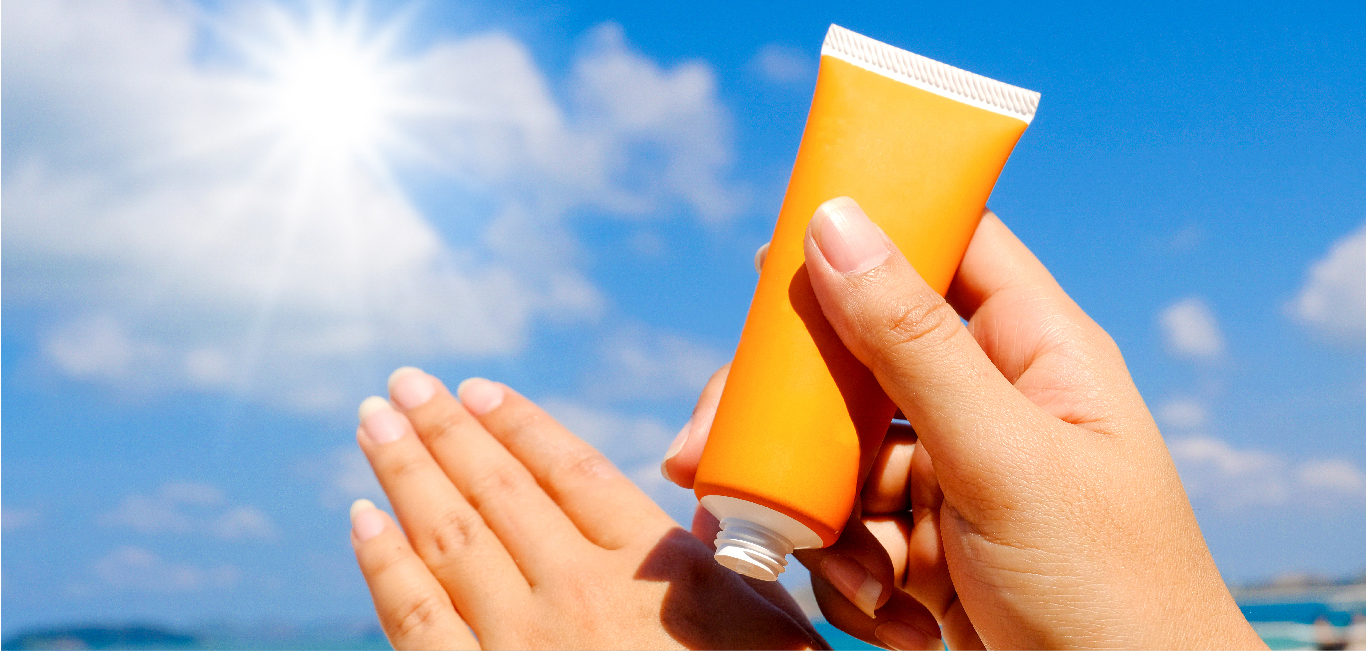
A sunscreen is mostly thought of as a saviour in the summers or when out and about in the sun. But did you know that it is important to introduce sunscreens to your skincare routine for healthy skin? Experts talk about this potent skin-health Samaritan at length.
Understanding harmful UV rays
The two types of UV rays that can damage the skin are UVA (Ultraviolet A), which can lead to premature ageing of the skin and UVB (Ultraviolet B) rays, which are associated with skin burns. In extreme cases, extensive exposure to the sun without any sunscreen can lead to skin cancer. Research on the efficacy of sunscreens has also proven that it reduces the risk of skin cancers.
What is sunscreen/sunblock?
Manali Lakhani, a cosmetologist based in Mozambique in Africa, defines sunscreen or sunblock as, “A photoprotective topical lotion used to safeguard one’s skin from ultraviolet radiations. It prevents sunburns and most importantly skin cancer.”
Sunscreen Vs sunblock
Drawing out the difference between sunscreen and sunblock, Lakhani says, “Sunscreen gets absorbed into the skin to protect you from UV rays. When purchasing sunscreen, check to see if it covers both UVA and UVB rays. Most sunscreens only cover UVB rays. A sunblock, however, stops the UV rays from penetrating your skin by forming a physical barrier. Sunblocks contain either zinc oxide or titanium dioxide and protect the skin against both UVA and UVB rays.”
Difference between chemical, physical and mineral sunscreen
“Physical sunscreen is another name for a mineral sunscreen. It works by creating a physical barrier on the skin’s surface which reflects UV radiation. Chemical sunscreen, on the other hand, gets absorbed into the skin. With the help of the chemical sunscreen the UV rays get absorbed and converted into heat which is then released from the body,” says Dr Anika Goel, dermatologist and founder of Soul Derma clinic in Delhi.
Physical or mineral sunscreen act by providing a barrier on the skin’s surface and thus leaves a white cast. It contains zinc oxide and titanium dioxide and can be safely applied to children.
Explaining the different types of sunscreen, Dr. Shruthi K, a cosmetologist based in Siliguri, West Bengal, says, “Chemical sunscreen is absorbed into the skin and thus has no white cast. It contains ingredients that are not safe for children.”
Sneha Kewalramani, a cosmetologist based in Nagpur, recommends physical sunscreens over a chemical ones. “Chemical sunscreen, if kept on the skin for long durations, can lead to clogging of the pores or itching,” she says.
A daily must-use – even indoors
Kewalramani adds that a sunscreen must be used daily, irrespective of whether one is going out or working from home. “Even indoor lights emit radiations that can affect the skin. Not to forget the UV rays which can pass through windows and cause ageing,” she says. While it is a recommended cosmetic practice, people with low vitamin D levels should always consult their physicians on its application.
With low vitamin D levels being a common worry among many, it is recommended that one checks with one’s medical practitioner on understanding the pros and cons of applying sunscreen.
How much SPF is too much?
The SPF number indicates the time taken for the skin to stay protected from the UV rays after the sunscreen is applied onto it. Ideally, with SPF 30 it would take your skin 30 times longer to burn than if you were not wearing sunscreen. “An SPF 30 allows about 3 per cent of UVB rays to hit your skin. An SPF of 50 allows about 2 per cent of those rays through. That may seem like a small difference until you realise that the SPF 30 is allowing 50 per cent more UV radiation onto your skin,” explains Lakhani.
As of now, there is no sunscreen that will provide 100 per cent protection against UV rays. Experts come with mixed opinions on the ideal SPF number that one should use in a tropical country like India. “In India, it is recommended to use sunscreen with SPF 50. This works best as your skin also absorbs 50 per cent of the sunlight that falls on it, which is converted into Vitamin D. Even in winter, one must use SPF 50,” suggests Kewalramani. Dr Shruthi says that a minimum of SPF 30 is required in India for protection against UV radiation. “SPF more than 50 is generally not required because an increase in SPF will require additional ingredients that may not be safe for the skin. SPF ranging between 30 to 50 is safe for the Indian population,” she adds.
Lakhani suggests some other preventive measures:
- It is important not to rely on high-SPF sunscreens alone. No single method of sun defence can protect us perfectly. Sunscreen is just one vital part of a strategy that should also include seeking shade and covering up with clothing, including wide-brimmed hats and UV-blocking sunglasses.
- For people who have a history or are at high risk of skin cancer, genetic diseases such as albinism or xeroderma pigmentosum or certain immune disorders, SPF 50 may not be enough. The same goes for scenarios such as hiking or skiing at high altitude or vacationing near the equator.
- The Skin Cancer Foundation recommends a water-resistant, broad-spectrum sunscreen with an SPF of 30 or higher for any extended outdoor activity. Regardless of the SPF, it is important to apply one ounce (two tablespoons) of sunscreen 30 minutes before going outside and reapply it every two hours or immediately after swimming or sweating.

















